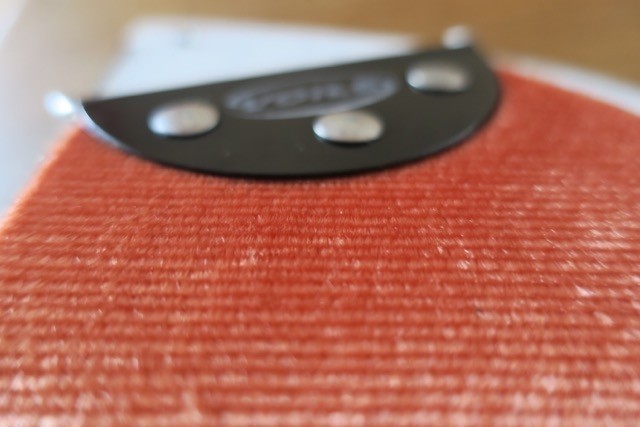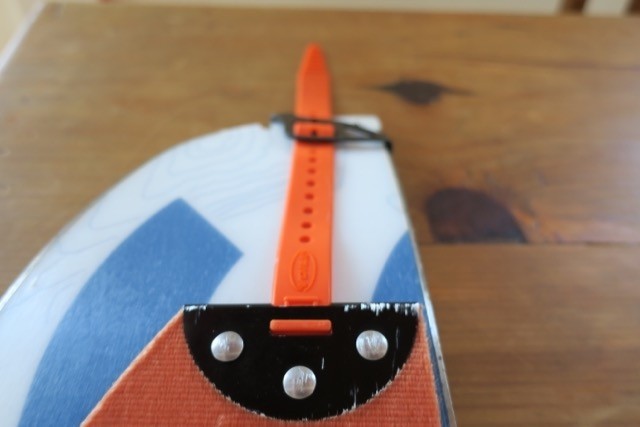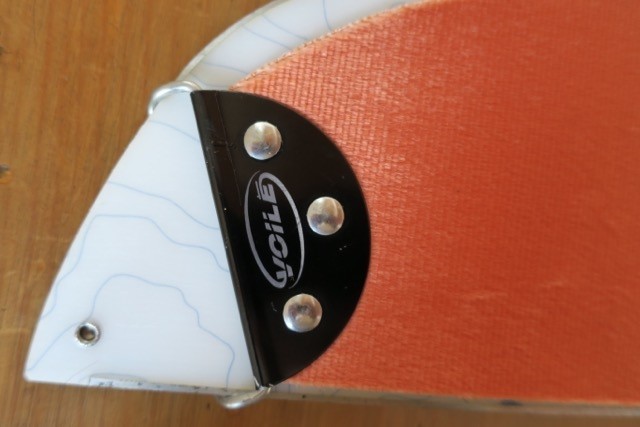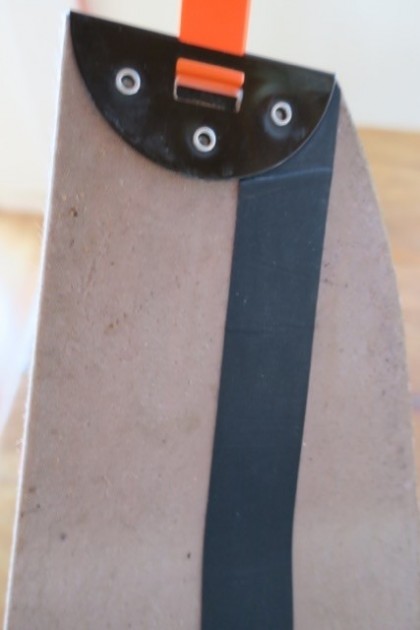Voile Skins with Tail Clip Review

Our Verdict
Our Analysis and Test Results
The Voile Splitboard Skins make a strong argument for simplicity, reliability, and grip. Cutting short a glorious day in the backcountry because your skins are failing is a major bummer; the odds of that occurring with these skins is low. Weight weenies and rando racers might want to look elsewhere, as these don't glide super well, and are heavier and bulkier than the lightest equipment out there.
Grip
This contender has a stellar grip, and the nylon fur clings superbly to skin tracks. Straight ice is tough on any skin, but if there is any soft or textured snow available, these skins will do a great job ascending it.
The grip provided is abundant, which makes them great for learning on; they can also be a loaner or backup pair when your technique grows out of them. The sturdiness of the nylon fur allows users to confidently cross short rock sections without as much concern for their skin integrity, as would be the case with a nylon/mohair mix skin. Another benefit of the relatively stiff and burly nylon skin material is that it helps maintain a solid connection near the nose of the splitboard where snow often sneaks in between the skin and the board. If any skin is applied incorrectly (with any gap in this area) or in particularly challenging conditions, snow will eventually find its way in here; the stiffness of these skins helps more than some of the softer skins.
Glide
This competitor prioritizes grip and durability, which comes at the expense of glide. They do glide but have more friction to overcome, which makes them inefficient over long touring days.
They are also noticeably slow when skiing down short hills and will stop the skinner faster than someone using mixed nylon/mohair skins. This will be noticeable on longer days that involve significant amounts on low angle and rolling terrain. It will be less noticeable on shorter and steeper ascents. Newer splitboarders who perhaps bootpacked or snowshoed previously will be less likely to notice this poor glide since any glide is noticeable and appreciated, relative to those forms of locomotion.
Ease of Use
These skins are relatively user-friendly and just about as much as we would expect in this category.
It is only necessary to trim the width of these skins, as the tip and tail attachments come attached. The tail attachment provides ample adjustment to allow for the skins to be shared between splitboards of roughly the same length. When brand new, the glue on these skins sticks to itself quite strongly and does require significant force to pull it back apart again. The strip of tape in the middle of the base reduces the amount of glue surface area and lessens the force needed. This tape also has the benefit that after a few seasons of use, the glue starts to lose its sticking power; removing the tape will expose fresh glue underneath and revitalize the sticking power of the skins. The fairly high weight and large volume (when folded up) did cost these skins in the side-by-side comparison.
Attachment System
The Voile utilized a tried and true system that has been keeping clips on tips for years.
The tip attachment on these skins is stout metal, with serious rivets securing it to the skin material; it appears mostly unchanged from what this company has used for several years, and we are not aware of any durability issues associated with it. The tail attachment is a newer innovation; it is a simple design that does its job well and is fairly easy to attach and remove. The rubber strap connecting the tail attachment has a helpful amount of stretch, which allows one to connect and remove the tail clip without too much muscle strain.
Glue and Glop
The adhesive on skins needs to be strong and prevent skin failures. However, it can't be too strong to where you dislocate a shoulder pulling it apart. The Voile was very robust at first, but over time, found a nice middle ground.
After a dozen or so tours, it weakened just enough to make pulling the skins apart a bit easier. The glue does a great job of sticking the skins to the splitboard, and we had very few issues with it not fully adhering to the splits. True long-term testing is beyond the scope of this review, though we can confirm that this brand of skins has a good track record.
This model avoided glop in all but the most challenging of conditions. In those conditions, we found all the skins to suffer equally with snow sticking to them. Stopping and scraping off the sticking snow and then rubbing a soft wax on the skins does reduce the issue at least temporarily.
Value
The Voile is an interesting product in terms of value. It offers decent performance at a good price. For someone looking for a robust introductory skin to last for years, then this is a good value. For an intermediate to advanced splitboarder seeking high performance, it might be a let down.
Conclusion
We spun around 180 degrees on the Voile Splitboard skins. Our first impression was that they appeared boring and lacked some of the pizazz offered by other skins in our review. After a season's worth of testing, we realized that pizazz is not necessarily a quality to look for in your climbing skins. These skins are tried and true and offer decent performance.
These split skins are excellent choices for all splitboarders looking for a skin with strong grip that will withstand years of hard use. This model also makes sense for folks who know they are demanding on their equipment. If you have a penchant for skinning over rocks, these skins and their sturdy construction are a good choice. Because these skins provide strong grip at the expense of some glide, weight, and bulk, they are even better choices for newer splitboarders who will appreciate this grip, but won't notice the negatives.







